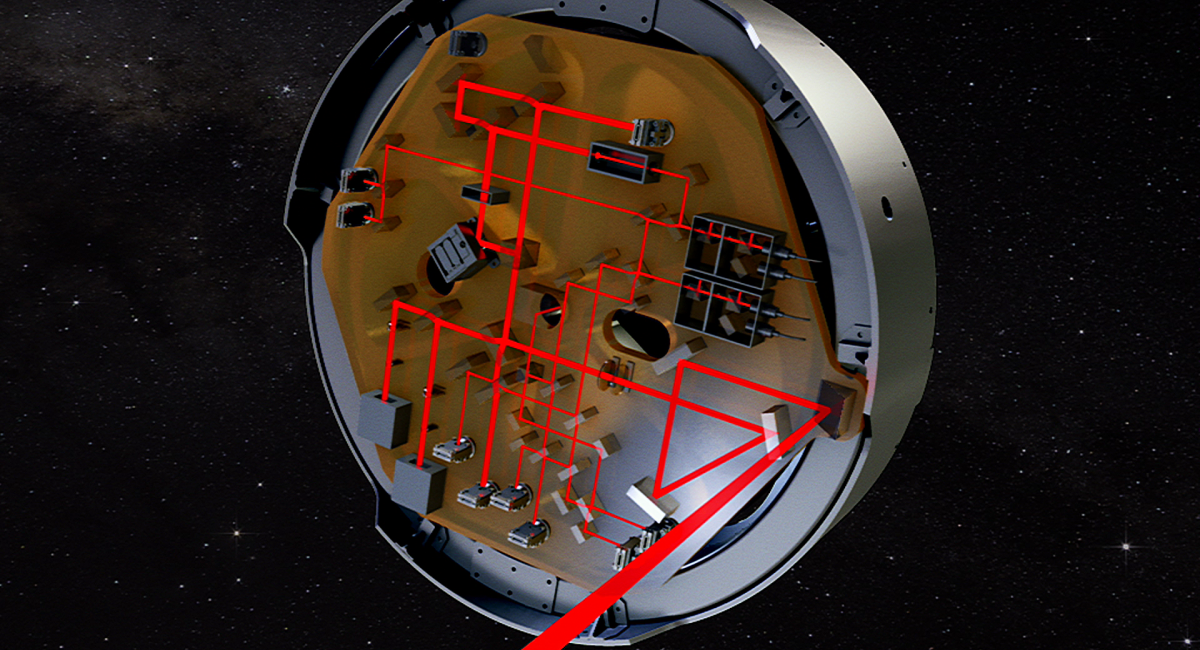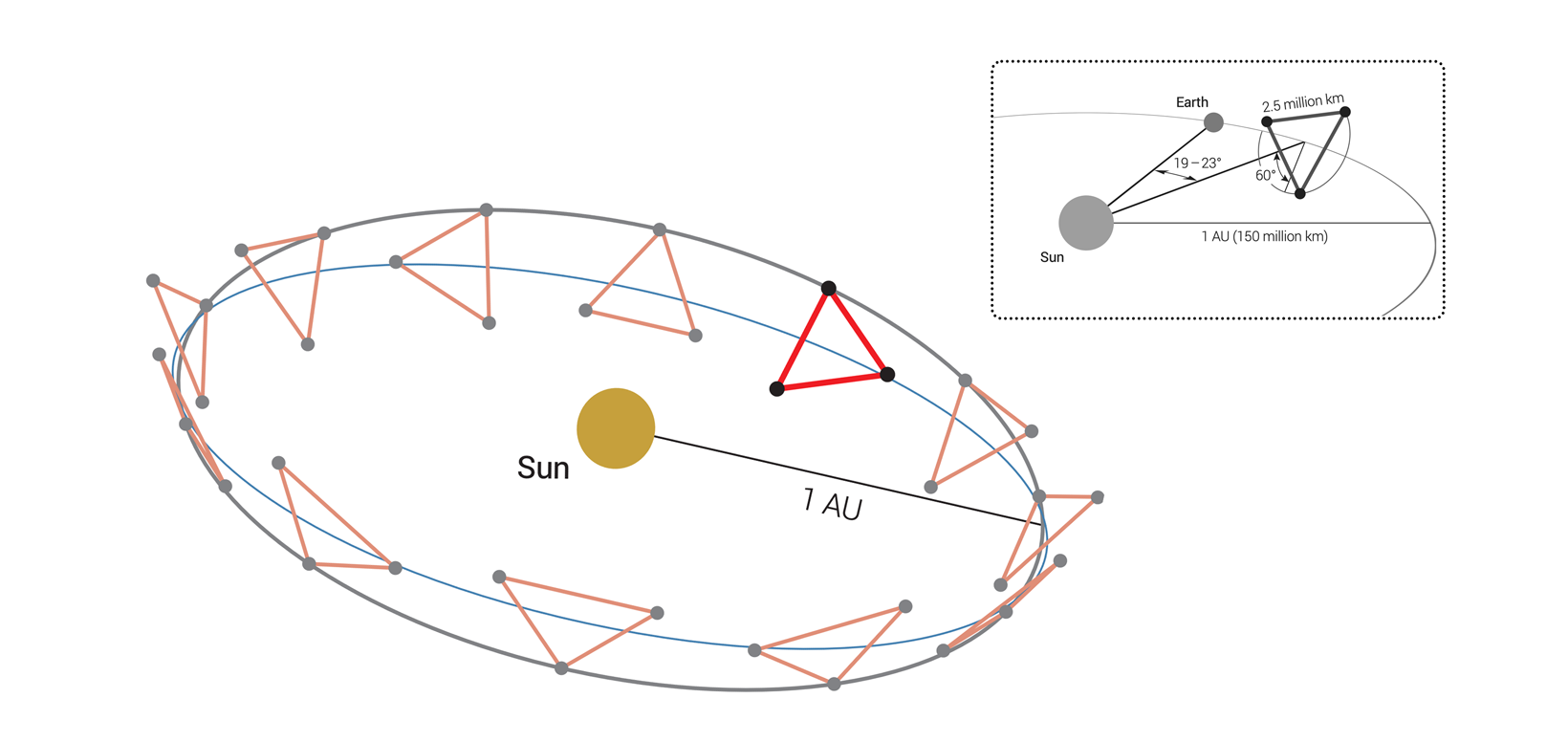Design features
Key features of LISA are interferometric measurement of distances, million-km long baselines, drag free spacecraft based on inertial sensors, and the familiar “cartwheel”-orbits. Unique are the free-falling test masses inside each spacecraft. The test masses will be undisturbed by forces other than gravitation. A new technology, the so-called “drag-free” operation, allows the spacecraft to follow the test masses, all the while shielding the test masses from spurious forces.
How can we measure the squeezing and stretching of space-time?
Gravitational waves are moving gravitational fields, “ripples” in the curvature of space-time, creating a time-varying strain or stretching of space-time. This appears as a fractional change in the distance between two points. Hence, LISA´s three spacecraft flying freely in space will oscillate together and apart by tiny amounts as a gravitational wave passes by. LISA will look for ripples with periods of a few minutes to a few hours. The expected distance changes are tiny, a few parts in 1021 or 1022 of the separation of the spacecraft.

A suitable instrument for measuring gravitational waves over a broad band of low frequencies is a laser interferometer with an arm length as large as possible and long integration times, the primary impetus for a space-borne detector. Hence LISA can be thought of basically as a high precision Michelson interferometer in space with an arm length of 2.5 million km.
In three orbits around the sun
LISA will consist of three spacecraft in Earth-like orbits around the Sun. They will fly 2.5 million kilometres apart in an equilateral triangle formation. The spacecraft will maintain their triangular formation even though they are in separate orbits around the Sun. The changing orientation of the triangle through one orbit will allow observers to determine the direction of gravitational wave sources. And: The LISA orbits ensure a stable thermal environment, minimising thermal disturbances on the spacecraft.
